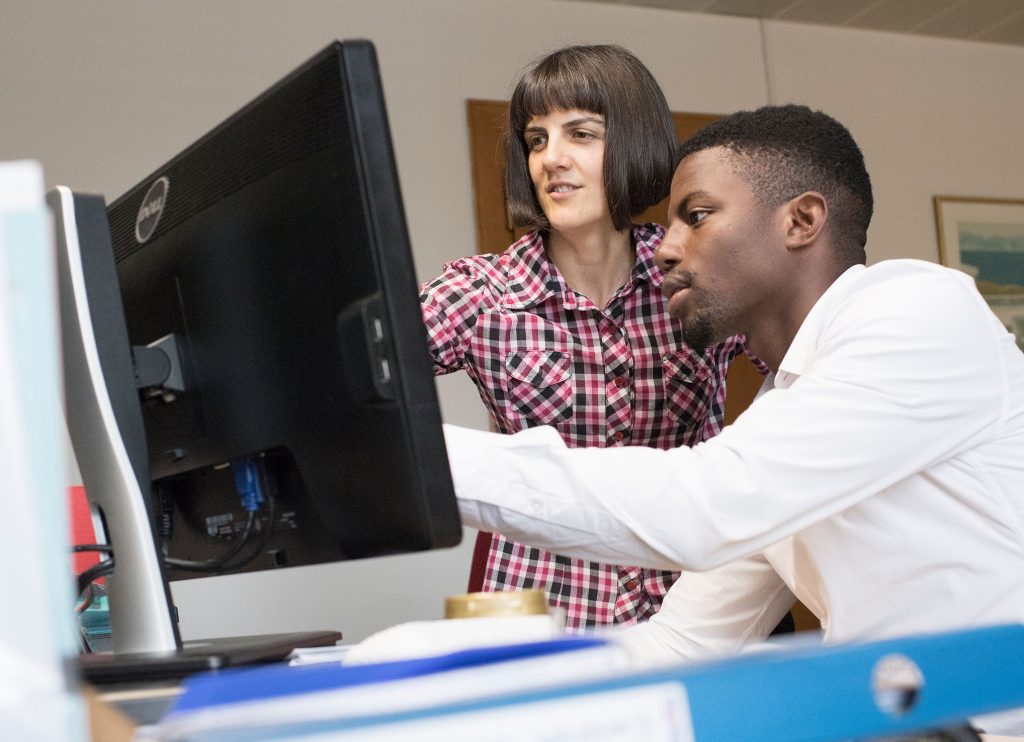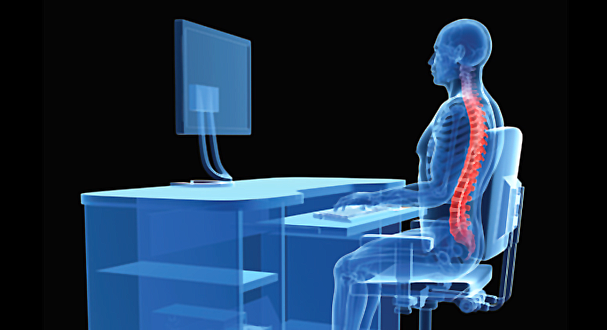The current COVID-19 outbreak has forced the majority of us to work from home, in what for many is an unfamiliar setting for activities normally performed elsewhere – in office spaces and/or the classroom, for example. This raises the question of how we can best organise both our physical environment and our daily work routines so that we can work productively and effectively while maintaining our physical and mental well-being. A basic understanding of ergonomics can help, as our institute’s ErgoTrans project shows.
By Gary Massey, Director of IUED Institute of Translation and Interpreting
Ergonomics, also known as human factors, is the scientific discipline concerned with the understanding of interactions among humans and other elements of a system in order to optimise human well-being and overall system performance (International Ergonomics Association). Among other things, it can tell us how we can adapt equipment, technology, work settings and working routines to get the best out of our working environments and practices without adversely affecting our health.
Ergonomics at home
Whether you are working from home as a translator or a teacher, as an administrator or an assistant, having an ergonomic environment and observing ergonomic routines are key to ensuring that you can work productively and effectively while maintaining your physical and mental well-being. Here are some ideas and tips to help you:
- Set up your working space properly. If you have access to them, use a large screen and an ergonomic keyboard, mouse and chair. Make sure the lighting is sufficient. The Swiss Federal Commission for Occupational Safety (FCOS) leaflet is a good guide
- Set up your table, chair, computer screen and input devices ergonomically. The Federal Commission for Occupational Safety (FCOS) gives more good advice.
- Adjust the room temperature and lighting to your needs.
- Extended work at the computer screen puts considerable strain on the eyes. Give your eyes regular breaks by looking away from your screen, preferably through a window to the outdoors in order to let your eyes focus on distant objects. And consider installing an application like f.lux to make the colour of your computer’s display adapt to the time of day – warm at night and like sunlight during the day.
- If you use a laptop, make sure your sitting, back, arm and leg positions are correct. This video shows you how.
- Make sure that your software is adapted to your needs, and not the other way around. Check and adapt the settings for your applications (formats, screen magnification, language, autocorrect, formulas, etc.) so that they meet your needs and do not distract you. Configure and use shortcut keys to avoid excessive keyboarding.
- Minimise distractors and stressors by concentrating on one job at a time.
- Don’t multitask at home – reserve separate times for work and household duties.
- Switch off sound alerts and switch your phone to silent unless you really need them.
- Disenable social media channels, messengers and chat functions on your computer unless absolutely necessary for your work.
- Consult emails at reasonable intervals (e.g. once an hour), but not constantly.
- Work on one document at a time.
- Reduce the number of windows and applications open on your screen to the minimum necessary.
- Avoid unnecessary distractors or stressors around your home workspace.
- Self-management is vital. Again, the FCOS provides some good advice.
- Avoid stress by giving yourself a realistic, manageable timetable.
- Concentrate on major tasks first and leave the minor ones until later. This will prevent you from unnecessarily wasting time and effort.
- Even if you are largely confined to home, try to maintain a balance between work and relaxation.
- Give yourself a regular workday routine. This should be as close as possible to the one you normally have at your institution to avoid spending too much time on work.
- Take regular breaks and exercise. Go out for walks if you can. Consider 20 minutes of stretching or yoga before work and at bedtime. Down Dog is a yoga app available free to schools and colleges until 1 July 2020. There are also a host of excellent videos on YouTube.
- Keep to a healthy, balanced diet.
Ergonomics and translation
The tips above include best practices derived from our own research. We at the ZHAW’s IUED Institute of Translation and Interpreting have been studying translation workplace ergonomics for a number of years, principally as part of the ErgoTrans research project investigating the cognitive and physical ergonomics of translation but also in collaboration with colleagues in other institutions. In a recent webinar for the British Institute of Translation and Interpreting, Maureen Ehrensberger-Dow applied insights from the project to show why language professionals should care about ergonomics. An edited version of her narrated presentation can be viewed here:
Defaulttext aus wp-youtube-lyte.php
Our research has given rise to a range of publications. Here is a selection of contributions that are publicly available at no charge:
Stay well, keep healthy
These extraordinary times have forced our governments and societies to impose extraordinary measures. But by taking perfectly ordinary steps to ensure that we work ergonomically, we can all stay well and keep healthy.
(Credits: ATA (2017) see above)

More on translation
- NMT, post-editing and evolving translator profiles
- Frauen sind Frauen – oder: Warum es bei der Übersetzung Menschen braucht
- In the driver’s seat of digitalisation
- Post-editing matters!

The Specialisation in Professional Translation within the MA in Applied Linguistics at the IUED Institute of Translation and Interpreting produces experts in professional linguistic mediation. Students choose between the following profiles:
- Specialised Translation
- Translation Management
- Barrier-free Communication / Audiovisual Translation
The Translation Management and Barrier-free Communication / Audiovisual Translation profiles can be done with two languages of study: the native language and one foreign language (language combination AC). The Specialised Translation profile requires a minimum of three languages of study (language combination ACC).
